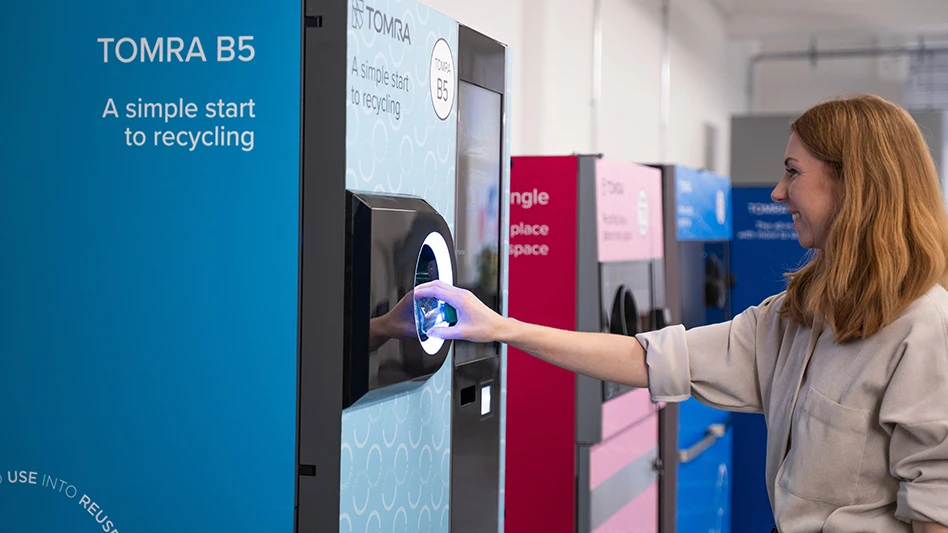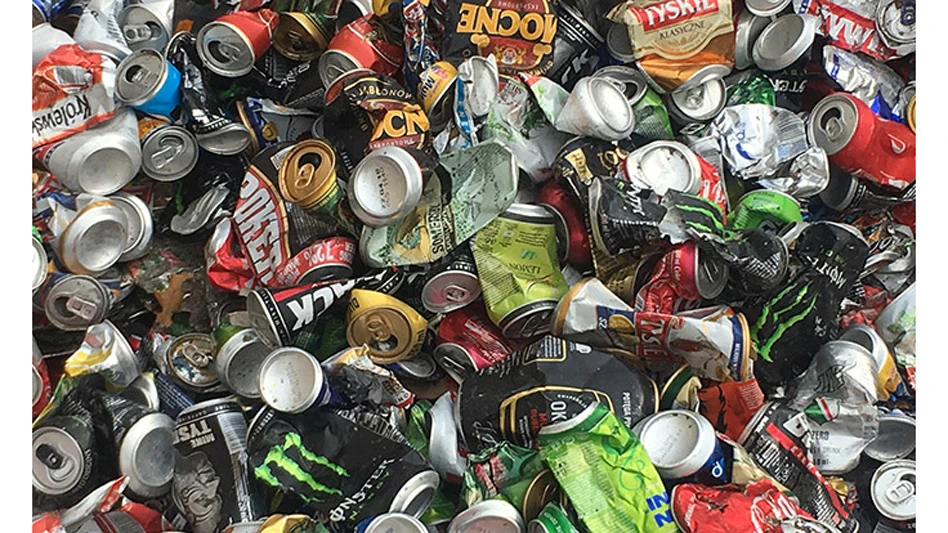
© Steve Allen | Dreamstime.com
The report, “Recycling Unpacked: Assessing the Circular Potential of Beverage Containers in the United States,” was published by Amsterdam-based Metabolic as part of a study commissioned by the Can Manufacturers Institute (CMI), Washington. It finds that aluminum cans have the highest circular performance when compared with glass and polyethylene terephthalate (PET) bottles. In the current U.S. system, more than 80 percent of beverage cans collected for recycling are turned back into new beverage containers compared with 59 percent of glass bottles and only 13 percent of plastic PET bottles, according to the study.
In addition to the analysis of current circular performance, the report analyzed the carbon-emission-reduction potential for the three beverage packaging types under three future scenarios: 100 percent collection, 100 percent sortation and a national deposit system. In each future scenario, the aluminum can would have the highest carbon-emission-reduction potential. For instance, if a 100-percent-deposit-collection rate is achieved for each material type, the total emissions impact reduction potential for recovering 1 metric ton of aluminum cans is three times higher than that of PET bottles and 42 times higher than that of glass bottles.
According to the report, producing virgin aluminum carries significant environmental impacts, making the use of recycled aluminum in beverage can production an industry imperative.
“Aluminum cans are unique in that they were designed with recycling in mind and that is a large part of why the aluminum can is the most recycled beverage container in the United States and the world,” CMI Vice President of Sustainability Scott Breen says. “Since metal, such as aluminum, recycles forever, and we already recycle aluminum cans at scale in the United States with 5 million aluminum cans recycled every hour, there is the potential for essentially all of the aluminum in beverage cans to be recycled multiple times, generating significant environmental and economic benefits.”
To achieve a truly circular system, recycling collection rates must be greatly improved, the study says. Of the nearly 90 billion aluminum cans used in the United States each year, only around half are recycled. The other half end up in landfills.
Based on a material-flow analysis and dynamic model for future scenarios, the report finds that compared with a 2020 baseline reaching a 100-percent-collection rate for used beverage cans has the potential to save an additional 6 million metric tons of carbon dioxide equivalent (CO2e) each year, which is the equivalent of the annual CO2e emissions from electricity used in more than 1 million U.S. homes.
The study also illustrates the impact that comes with the aluminum can’s ability to be recycled multiple times. One aluminum can that is continually recycled has the potential to displace up to 15 cans’ worth of material over 40 recycling loops. If all the 45 billion aluminum cans currently being landfilled each year in the United States were to be collected and recycled 40 times, and if all that material were to displace primary aluminum production, the greenhouse gas emission savings would be the equivalent of taking more than 25 million cars off the road each year or charging 15 trillion smartphones, the study notes.
To unlock the full circular potential of all materials analyzed, the report underscores the need for a systemic transition, bolstered by coordinated action from all stakeholders across the value chain. The report recommends the expansion of deposit return systems across the United States to increase collection rates. For glass, the report recommends focusing on reuse. Glass bottles can be washed and refilled up to 25 times before needing to be recycled. For PET bottles, investment in new recycling technologies is needed, including energy-efficient chemical recycling processes for purer material streams.
“It’s important to keep in mind that a product only achieves a high circular performance in a properly functioning circular system,” says James Souder, lead author and sustainability consultant at Metabolic. “All materials could be handled in a noncircular way. So, it’s critical that we look not only at each material’s properties but also at the systemic factors that influence how each material is collected, processed and reintegrated into new products while finding key points to shift the system towards a more circular and sustainable future.”
Latest from Recycling Today
- ReMA urges open intra-North American scrap trade
- Axium awarded by regional organization
- China to introduce steel export quotas
- Thyssenkrupp idles capacity in Europe
- Phoenix Technologies closes Ohio rPET facility
- EPA selects 2 governments in Pennsylvania to receive recycling, waste grants
- NWRA Florida Chapter announces 2025 Legislative Champion Awards
- Goldman Sachs Research: Copper prices to decline in 2026





